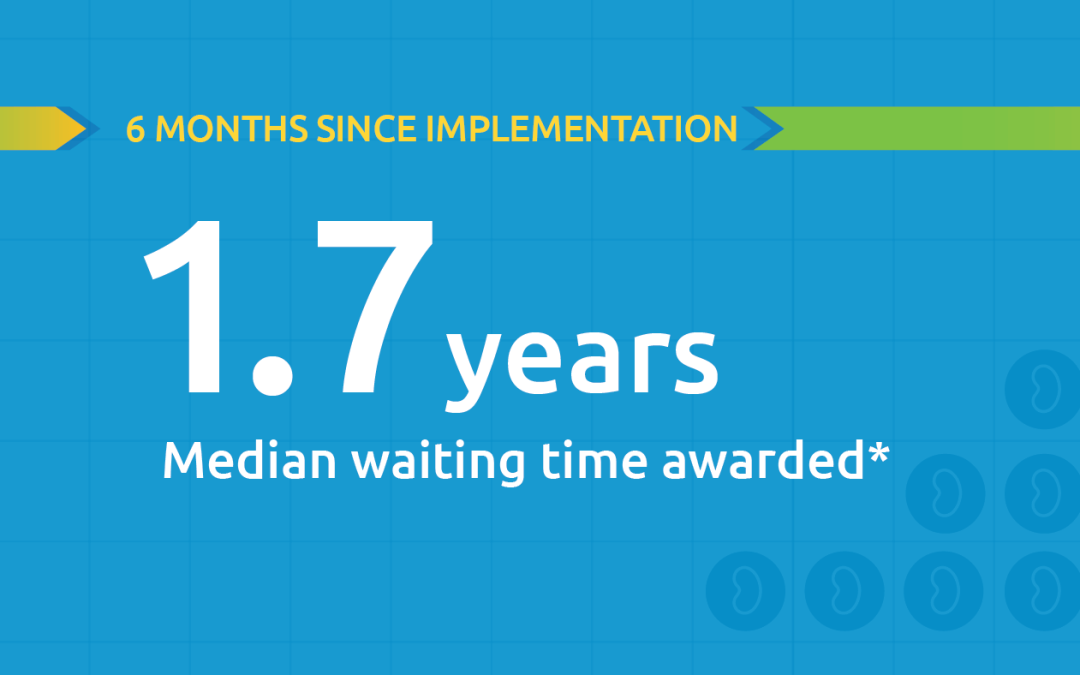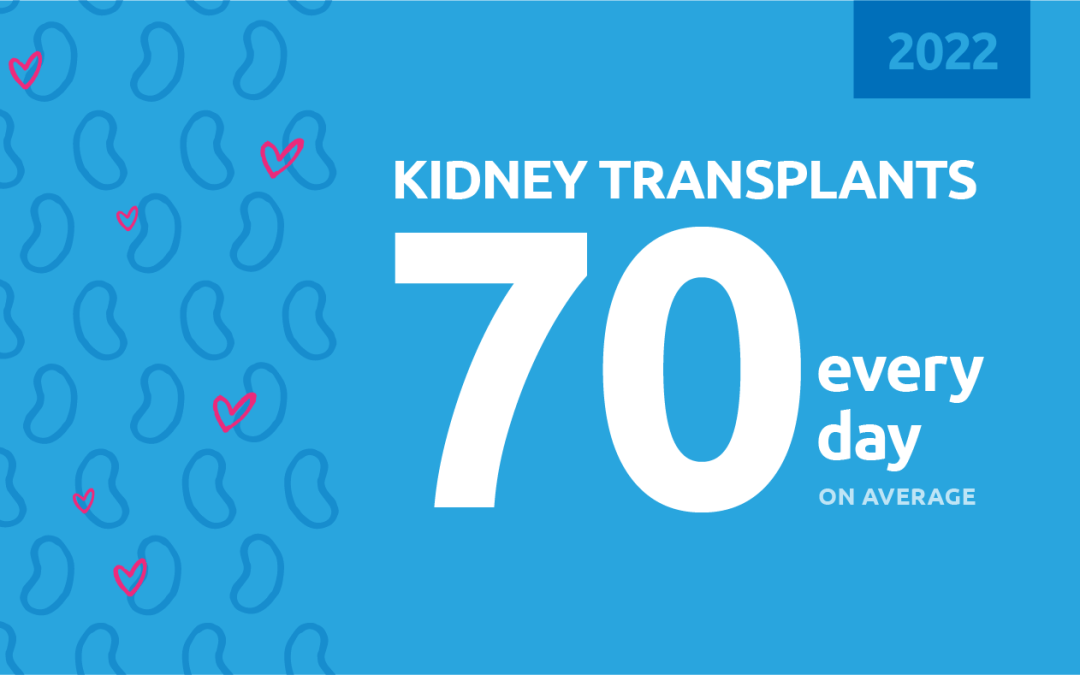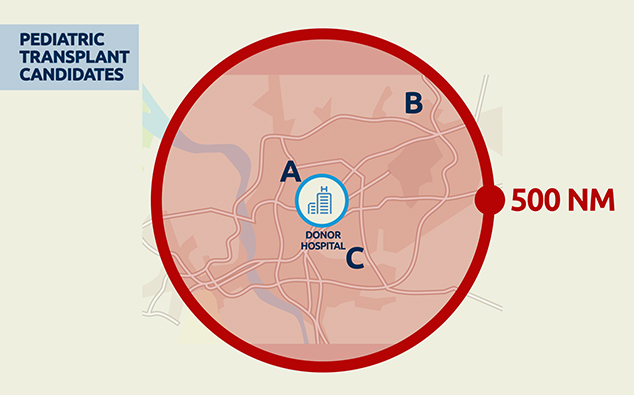In this example, pediatric transplant candidates listed at transplant hospitals A, B or C would all be within the initial level of distribution for compatible donor offers.
More pediatric patients will receive transplants as a result of the new OPTN liver distribution policy.
For pediatric liver donors (younger than age 18), the liver distribution policy passed by the OPTN/UNOS Board of Directors in December 2018 generally increases priority for pediatric candidates before adult candidates other than Status 1A. Livers from pediatric donors will be offered initially to compatible pediatric candidates listed at any transplant hospital within a 500 nautical-mile radius of the donor hospital.
Modeling shows that under the new system:
- More children will receive a transplant
- Fewer people will die waiting
- There will be greater consistency in the geographic areas used to match liver transplant candidates with available organs
Learn how the system will prioritize all liver transplant candidates
In focus

A decade of record increases in liver transplant
10,660 liver transplants, the most ever in a year.

Black kidney candidates are receiving waiting time modifications, helping them get the organs they need
Latest kidney monitoring report shows two new kidney polices are working as intended

Research in focus: examining organ offers
Three recent studies from UNOS researchers examine offer acceptance practices and impact of Offer Filters tool.

New milestone reached in kidney donation and transplant
For the first time, more than 25,000 kidney transplants were performed in a single year

